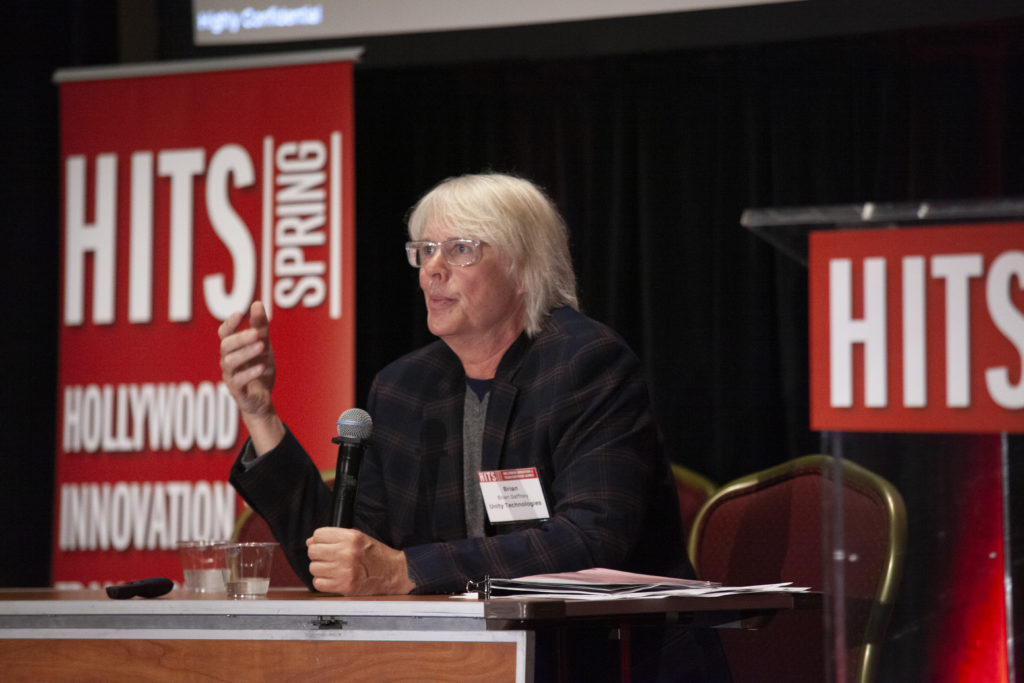
HITS Spring: Unity’s Building the Infrastructure That Will ‘Drive the Future of Content Creation’
From Unity Artistry tools that include ArtEngine, SpeedTree and Ziva Dynamics to its Weta pipelines in support of virtual production, video game software development company Unity Technologies has been making bold moves in Hollywood, according to Brian Gaffney, business development manager at the company.
“We’re putting together a focus on pro-artistry tools that really encompass what the creative solution … [requires] for production,” he said during the Virtual Production session “Unity’s Approach to Virtual Production” at the Hollywood Innovation and Transformation Summit (HITS) on May 19.
The company is best-known as the maker of the Unity cross-platform game engine.
But “Unity is more than just a game engine,” Gaffney told HITS attendees. “We’re really building the infrastructure that’s going to drive the future of content creation,” he said.
The “tip of that spear is Accelerate Solutions, tasked with solving storytellers’ problems today,” according to Unity.
Before the pandemic accelerated virtual production, Unity created the virtual camera process with its Photon product that was used for films including Blade Runner 2049, The Jungle Book and Ready Player One, Gaffney said.
The company has a platform called Unity Pro that “we built virtual production tools around,” he noted, adding: “Now we added to it an ecosystem of artistry tools that allow you to create your environments, your biomes, your virtual sets, using tools” that include Art Engine and SpeedTree.
 “And then we bring together a full team, a full network of solutions providers” from across Unity that “can help our customers get their projects across the line,” he said.
“And then we bring together a full team, a full network of solutions providers” from across Unity that “can help our customers get their projects across the line,” he said.
Unity also has a fairly large media and entertainment (M&E) vendor ecosystem globally, he pointed out. They include companies that focus on: interactivity; VFX, animation and 3D world building; previsualization, motion capture and tracking; art, assets and 3D scanning; LED studios and projection screens; and game studios and verticals.
“Everywhere I’ve been going, I talk to people about virtual production [and] the biggest pain points – requests we get – is access, education and literacy,” Gaffney said.
In response, Unity has “put together a fairly extensive beta program now that allows us to develop that partner network [and] provide them access to all these tools” that the company provides and then, “we have through our hub, this Learn Platform, where we can embed tutorials and videos” to help people quickly get “up to speed” on using the tools.
As part of today’s end-to-end production workflows, it is important that we “educate people not just on what real-time 3D is but how it integrates with the rest of the process, from camera capture, audio – the entire archive,” he explained.
While 2021 was a year for foundational tools available to all users and licenses, in 2022, Unity is focused on virtual production workflows, he said.
The company recently released Open Sound Control support in beta, he noted. Planned for 2022 in cinematic companion apps are enhancements including improved scene and timeline navigation, improved workflows for runtime use cases, and better timeline playback and camera controls. Also planned for this year is timecode synchronization across devices, Gaffney said.
The Hollywood Innovation and Transformation Summit event was produced by MESA in association with the Hollywood IT Society (HITS), Media & Entertainment Data Center Alliance (MEDCA), presented by ICVR and sponsored by Genpact, MicroStrategy, Whip Media, Convergent Risks, Perforce, Richey May Technology Solutions, Signiant, Softtek, Bluescape, Databricks, KeyCode Media, Metal Toad, Shift, Zendesk, EIDR, Fortinet, Arch Platform Technologies and Amazon Studios.
